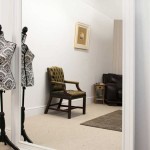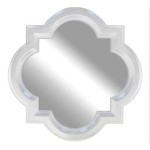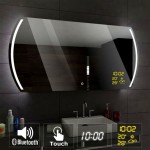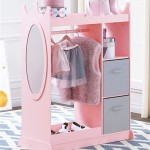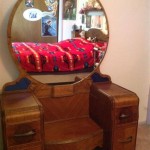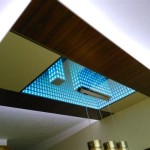Best Glue for Large Mirrors
Mounting a large mirror requires careful consideration of the adhesive used. The wrong choice can lead to slippage, damage to the wall, or even the mirror breaking. Selecting the appropriate adhesive is crucial for a secure and lasting installation. This article explores several suitable adhesives and provides guidance for choosing the best option.
Key Considerations When Choosing Mirror Adhesive
Several factors play a critical role in selecting the right adhesive for a large mirror. These factors influence both the immediate installation process and the long-term stability of the mounted mirror.
*Weight and Size of the Mirror: Larger and heavier mirrors require adhesives with higher bonding strength and weight-bearing capacity. A small, decorative mirror can be affixed with a relatively weak adhesive, while a large, heavy mirror demands a much stronger solution.
*Mirror Backing: The material of the mirror backing influences adhesive compatibility. Some adhesives bond better to certain materials than others. Always check the adhesive manufacturer's recommendations for compatibility with the mirror backing.
*Wall Surface: The wall material is another critical consideration. Porous surfaces like drywall require different adhesives than non-porous surfaces like tile or metal. Matching the adhesive to the wall material ensures a secure bond.
*Environmental Conditions: Bathrooms and other high-humidity environments require moisture-resistant adhesives. Temperature fluctuations can also affect adhesive performance, so consider the ambient temperature range of the installation location.
*Cure Time: The cure time, or the time it takes for the adhesive to reach full strength, impacts the installation process. Longer cure times might necessitate temporary supports while the adhesive sets.
*Application Method: Some adhesives are applied in beads, while others require full surface coverage. The application method influences both the ease of use and the overall strength of the bond.
Types of Adhesive Suitable for Large Mirrors
Several adhesive types are commonly used for mounting large mirrors. Each type offers unique characteristics that make it suitable for specific applications.
*Neutral-Cure Silicone Sealant: This type of adhesive offers excellent adhesion to a variety of surfaces, including glass, metal, and tile. It is also highly resistant to moisture and temperature fluctuations, making it ideal for bathroom installations. Neutral-cure silicone sealants offer good flexibility, accommodating minor movements and vibrations.
*Mirror Mastic: Specifically formulated for mirror mounting, mirror mastic provides a strong bond and is designed to avoid damaging the mirror's silvering. It typically has a longer cure time than other adhesives, requiring temporary support during installation.
*Construction Adhesive: Heavy-duty construction adhesives can be used for very large and heavy mirrors. These adhesives offer exceptional bonding strength but may require specific surface preparation for optimal adhesion. It’s critical to ensure the chosen construction adhesive is compatible with mirror backing.
*Epoxy: Epoxy adhesives provide a high-strength bond and excellent durability. They are resistant to moisture, chemicals, and temperature extremes, making them suitable for demanding environments. However, epoxies can be more challenging to work with and require careful mixing and application.
Tips for Successful Mirror Installation
Proper installation techniques are essential for a secure and lasting mirror mounting. Following these guidelines can significantly improve the outcome.
*Surface Preparation: Clean both the wall and the mirror backing thoroughly to remove dust, grease, and other contaminants that can interfere with adhesion. For porous surfaces, priming might be necessary to improve bonding.
*Adhesive Application: Follow the manufacturer's instructions carefully for adhesive application. Ensure adequate coverage and proper spacing to support the weight of the mirror.
*Support During Curing: For adhesives with longer cure times, provide temporary support for the mirror until the adhesive reaches full strength. This prevents slippage and ensures a proper bond.
*Safety Precautions: Wear appropriate safety gear, including gloves and eye protection, when working with adhesives. Ensure adequate ventilation to prevent the inhalation of fumes.
Understanding Adhesive Properties
Familiarity with key adhesive properties is crucial for making informed decisions about mirror mounting.
*Bond Strength: This refers to the force required to separate the bonded surfaces. Higher bond strength is crucial for heavier mirrors.
*Flexibility: Flexible adhesives can accommodate minor movements and vibrations, reducing stress on the mirror and the bond.
*Moisture Resistance: For installations in humid environments, moisture resistance is essential to prevent adhesive failure.
*Temperature Resistance: The ability to withstand temperature fluctuations is important for maintaining a strong bond in varying climates.
Choosing the Right Adhesive
Selecting the best adhesive for a large mirror depends on a combination of factors. Carefully consider the weight and size of the mirror, the wall material, the environment, and the desired application method. Consulting the adhesive manufacturer's specifications and recommendations is essential for ensuring compatibility and optimal performance.
Preparing the Surfaces
Proper surface preparation is critical for achieving a strong and lasting bond. Cleaning both the wall surface and the back of the mirror is paramount. Any dust, debris, or grease can hinder the adhesive's ability to bond effectively.
What Is The Best To Use Glue Mirrors A Wall Quora

Evo Stik Solvent Free Light Grey Mirror Adhesive 290ml Diy At B Q

How To Use Mirror Adhesive Silicone
Mirror Adhesive Adiseal Strong Glue For

Mirror Silicone Sealant Diy Bostik

Mirror Silicone Sealant Diy Bostik

Putting Your Mirror Up With Adhesive April 2024 Our 5 Picks For The Best Adhesives

Mirror Fix 100 Adhesive Manufacturers

How To Use Mirror Adhesive Silicone
What Is The Best To Use Glue Mirrors A Wall Quora

